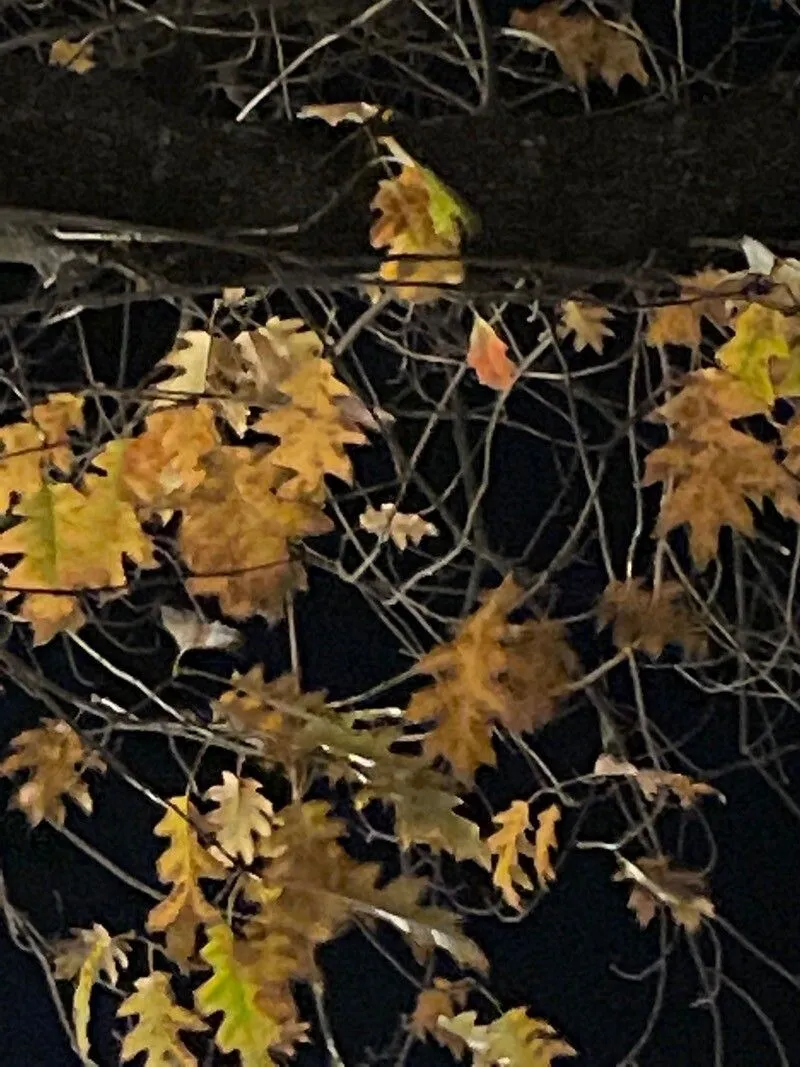
Author: Newb.
Bibliography: Pacif. Railr. Rep. Williamson & Abbot, Bot. 6(3; 2): 28, 89 (1858)
Year: 1858
Status: accepted
Rank: species
Genus: Quercus
Vegetable: False
Observations: California, SW. Oregon
The California black oak, scientifically named Quercus kelloggii, is a prominent tree species belonging to the Fagaceae family. First described in the mid-19th century by Newb., the California black oak has since been ingrained as a notable part of the flora in certain parts of North America.
Distinctly recognized for its substantial presence in California and southwestern Oregon, this oak flourishes in diverse geographical landscapes, notably contributing to the biodiversity of these regions. The tree is renowned for its sturdy structure and the unique characteristics of its bark and leaves. The bark is typically dark and deeply furrowed, giving the tree its “black oak” nomenclature. Its lobed leaves exhibit a lustrous green hue during the warmer months, which gracefully transition to vibrant shades of yellow and orange in the autumn, adding to the seasonal splendor of its surroundings.
Ecologically, the California black oak plays a critical role. It provides rich habitats for numerous wildlife species and supports varied ecological processes. The acorns produced by Quercus kelloggii are a significant food source for local fauna, including deer, squirrels, and various bird species. Furthermore, these acorns historically held immense value for indigenous peoples, serving as a vital component of their subsistence.
This oak species demonstrates a fascinating adaptation to fire. While mature trees possess a remarkable resistance to the effects of wildfires, young saplings often resprout vigorously after fire events, ensuring the continuity of their lineage in fire-prone habitats.
Overall, the California black oak stands as a resilient and ecologically integral species. Its presence across the Californian and southwestern Oregonian landscapes not only underscores its adaptability and ecological importance but also its historical and cultural significance.
Eng: california black oak, kellogg oak
En: California black oak, Kellogg oak
Zh: 加州黑栎
Eo: Kalifornia kverko
Ka: Კალიფორნიის შავი მუხა
De: Kalifornische Schwarzeiche
He: אלון שחור קליפורני
Fa: بلوط سیاه کالیفرنیا
Ru: Дуб Келлога
Zh-hant: 加州黑櫟
Uk: Дуб Келлога
Taken Nov 17, 2022 by Villien Philippe (cc-by-sa)
Taken Oct 9, 2020 by H Julia (cc-by-sa)
Taken Nov 17, 2022 by Villien Philippe (cc-by-sa)
Taken Jun 30, 2021 by Kevin Coffey (cc-by-sa)
Taken Jun 30, 2021 by Kevin Coffey (cc-by-sa)
Taken Jun 1, 2018 by Daniel Barthelemy (cc-by-nc)
Taken Jun 1, 2018 by Daniel Barthelemy (cc-by-nc)
Taken Jun 30, 2021 by Kevin Coffey (cc-by-sa)
Taken Apr 8, 2013 by EOL − Gary Griffith (cc-by-nc-sa)
Taken May 3, 2014 by EOL − Steve Matson (cc-by-nc)
Taken Mar 3, 2014 by EOL − Tony Iwane (cc-by-nc)
Taken Mar 2, 2014 by EOL − Liam O’Brien (cc-by-nc)
Taken Mar 3, 2014 by EOL − Tony Iwane (cc-by-nc)
© copyright of the Board of Trustees of the Royal Botanic Gardens, Kew.
Growth form>: Single Stem
Growth habit>: Tree, Shrub
Growth rate>: Slow
Ph maximum: 7.5
Ph minimum: 5.5
Family: Myrtaceae Author: (F.Muell.) K.D.Hill & L.A.S.Johnson Bibliography: Telopea 6: 402 (1995) Year: 1995 Status:…
Family: Rubiaceae Author: Pierre ex A.Froehner Bibliography: Notizbl. Bot. Gart. Berlin-Dahlem 1: 237 (1897) Year:…
Family: Sapindaceae Author: Koidz. Bibliography: J. Coll. Sci. Imp. Univ. Tokyo 32(1): 38 (1911) Year:…
Family: Asteraceae Author: A.Gray Bibliography: Pacif. Railr. Rep.: 107 (1857) Year: 1857 Status: accepted Rank:…
Family: Fabaceae Author: Medik. Bibliography: Vorles. Churpfälz. Phys.-Ökon. Ges. 2: 398 (1787) Year: 1787 Status:…
Family: Aspleniaceae Author: (Cav.) Alston Bibliography: Bull. Misc. Inform. Kew 1932: 309 (1932) Year: 1932…